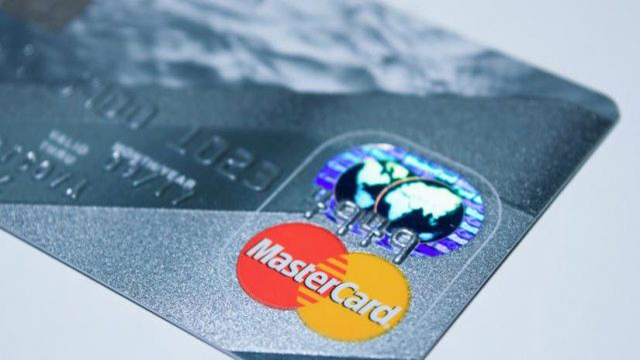Advertiser Disclosure
How To Choose The Best Balance Transfer Credit Card
Updated On September 5, 2023
Editorial Note: This content is based solely on the author's opinions and is not provided, approved, endorsed or reviewed by any financial institution or partner.

A balance transfer credit card helps you transfer all or part of your existing credit card debt from one credit card to another credit card. The goal of the best balance transfer cards is to help you save money on interest payments, particularly for high interest credit card debt.
With the best balance transfer cards, you can save money by transferring your existing credit card balance to a new balance transfer credit card with a 0% introductory balance transfer rate. Then, you can pay 0% interest on your credit card balance and new purchases for up to almost 2 years. Zero percent balance transfer cards are a type of credit cards that offer zero percent interest on credit card balances for an initial term. These are some of the best balance transfer cards to save you interest costs and help you repay credit card debt faster.
How to get the best balance transfer credit card
If you want to choose the best balance transfer credit card, you should focus on three factors:
- Balance transfer fee
- The credit card issuer
- Introductory APR period
Balance transfer fee. Some of the best balance transfer cards charge a transfer fee, which may be up to 3% of the credit card balance.
Credit card issuer. When you transfer a credit card balance from one credit card to a balance transfer card, make sure that the credit cards are from different credit card issuers. Generally, you can’t transfer a credit card balance from one credit to another credit card that are both from the same credit card issuer.
The best balance transfer credit card will give you an introductory APR period to pay off your credit card balance with no interest. A 0% APR introductory period is a great way to save money and give you time to pay off a credit card balance with a balance transfer card.
When it comes to the best balance transfer cards, you will need to have a good to excellent credit score. You can get approved with a strong credit profile because banks want to approve customers with a history of financial responsibility who repay their credit card balance.
How much is the balance transfer fee?
The typical fees for balance transfer cards can be 3% to 5% of the credit card balance that you transfer. The good news is that most of the best balance transfer credit cards won’t make you pay the balance transfer fee upfront. Instead, the balance transfer fee simply gets added to your credit card balance.
Some of the best balance transfer cards have zero percent fees for a certain period so that you can get organized. That’s why a 0% introductory APR can be a good option for you. If you pay at least your minimum monthly payment, you can avoid late fees.
What is the introductory APR for a balance transfer card?
One of the best reasons to get a balance transfer card is the 0% APR. The 0% APR credit card will save you money when you make a balance transfer. The longer the introductory APR period, the better for you. Why? You will have more time to pay off your credit card balance and will not owe interest during this period.
Once the introductory or promotional APR on your balance transfer card ends, the APR will increase. So, make sure you know the date when your introductory APR expires. This way, you won’t be caught off guard. Remember, the best balance transfer credit card is a tool to help you pay off debt. However, it is not simply a credit card to leave your credit card balance forever.
What are the pros and cons of a balance transfer card?
When people ask, “What is the best balance transfer cards?” it is important to understand the pros and cons of the best balance transfer credit cards.
Pros of Balance Transfer Credit Cards
The best balance transfer cards have several advantages:
- Balance transfer credit cards are a great way to stop high interest charges on your credit card balance.
- The best balance transfer credit cards help you repay debt faster.
- The best balance transfer credit cards often have no annual fee, or a minimum annual fee.
- Some of the best balance transfer cards may include 0% APR for the first 6-15 months, and potentially longer.
Cons of Balance Transfer Credit Cards
The best balance transfer cards have several considerations:
- The best balance transfer credit cards typically do not give you credit card rewards. So, if your goal is to get the best rewards cards or the best cash back cards, then perhaps those credit cards make more sense. The best balance transfer credit cards are really for helping you manage credit card debt, rather than for rewards.
- Credit card balance transfer offers will have a balance transfer fee, which is typical.
- The low interest or 0 percent APR may only last for a certain time period, so be sure to have a debt repayment action plan in place.
How to do a balance transfer to a new credit card
Once you know how to get the balance transfer credit card, you also need to know how to make a balance transfer with a balance transfer credit card.
The process to transfer a credit card balance with balance transfer credit cards is simple. Once you are approved for the best balance transfer cards, call customer service of the balance transfer credit card issuer. Ask customer service to help you with the balance transfer process, which involves paying off your existing credit card debt with your new balance transfer credit card.
Here are 5 steps how to do a balance transfer with a balance transfer credit card:
1. Use balance transfer cards from a different bank
When it comes to credit card balance transfer offers, make sure to choose balance transfer credit cards from a credit card issuer different than your current credit card issuer. The reason is that you can’t simply lower your credit card interest rate with balance transfer credit cards at the same bank. The reason you get the lower interest rate with the best balance transfer cards is that the new bank wants your business. Therefore, the new bank is willing to offer you low interest to have you as a customer with their balance transfer credit cards.
2. Balance transfer cards are not really for spending
Remember, the goal of balance transfer cards is to transfer your existing credit card balance to a new credit card with a lower interest rate. Therefore, credit card balance transfer offers should be used for transferring credit card balances, not new spending. So, don’t use balance transfer credit cards for new purchases.
3. Make the balance transfer as soon as possible
Once you are approved for the best balance transfer cards, make sure to make your balance transfer as soon as possible. You don’t want to lose the promotional period with balance transfer credit cards.
4. Use balance transfer credit cards to repay debt
Another goal of the best balance transfer cards is debt repayment. Therefore, make sure to have an action plan to repay credit card debt once you are approved. When the promotional period ends with even the best balance transfer cards, you should be prepared with your debt repayment plan.
5. Always make the minimum payment
Balance transfer cards help you repay credit card debt promptly. Therefore, be sure to pay at least the minimum payment each month. This strategy not only help you save interest costs, but also helps you protect your credit score and avoid late fees.
How long does it take to transfer a credit card balance?
When customers ask “how to transfer credit card balance”, they will find that it typically takes only 1-2 weeks. Your new bank will pay off your old bank, and your credit card balance is transferred to your new credit card.
Once your credit card balance has been transferred to your new credit card, make sure that you:
- Make sure your old credit card has been paid off in full with your new credit card
- Know when your introductory APR ends.
- Have a credit card debt repayment strategy
- Always pay the minimum monthly payment



